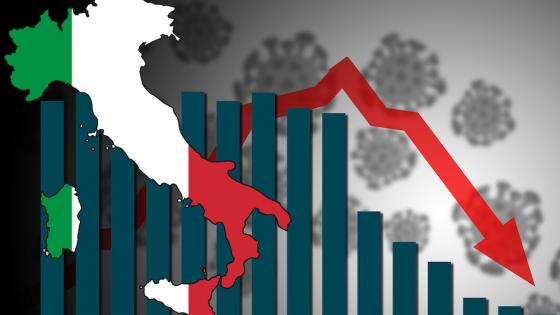Governments and central banks around the world have enacted policies aimed at providing liquidity to companies no matter their size. This liquidity has been injected either directly or through the banking system, mostly in the form of loans or credit guarantees, in order to limit the recessionary impact of the COVID-19 shock (Becker et al. 2020). Such generous liquidity support in the form of debt, however valuable for firm survival in the short term, is far from being sufficient in the medium and long term. Indeed, as liquidity reaches companies through debt, it increases their leverage, hence raising their default risk and leaving them vulnerable and with little room to invest and grow. This predicament highlights the urgent need to think about solvency, not just liquidity, and to inject new equity, not just liquidity, into viable firms as proposed by Boot et al. (2020).
Our assessment of how much equity capital will eventually be ‘burnt’ in the ongoing crisis is a key pre-requisite if we are to understand the depth of the problem, and further if we are to decide on the potential magnitude of policy interventions. We start by analysing the extent to which firm leverage would increase depending on the length of the lockdown. Such an assessment can guide us in estimating the size of the equity injection required to rebalance the capital structure of firms in order for them to get back on their feet as the crisis abates, both in Europe and elsewhere. In a recent paper (Carletti et al. 2020), we attempt such a detailed exercise for Italy, the first economy in Europe to be seriously affected by the COVID-19 outbreak, and one of the most stressed since then.
Quantifying the equity shortfall
We estimate the net income losses due to the lockdown for a large, representative sample of 80,972 Italian firms provided by Orbis (Bureau Van Dijk), which accounts for a substantial proportion of the Italian economy. Our analysis, based on 2018 data (the latest available year with wide coverage), aims at quantifying the changes in firm leverage, and the consequent distress due to the lockdown resulting from the COVID-19 outbreak.
Admittedly, this is an exercise fraught with difficulties, since the crisis may still unfold in many different ways that we can currently not account for. For instance, depending on whether there will be a second wave of infections, or whether an effective vaccine is discovered and mass-produced, different scenarios are possible. We consider a range of such, which all differ in the predicted duration of the lockdown. To identify the effects of the COVID-19 shock for each sector, we assume a drop in firm revenues proportional to the fraction of value added forgone in a corresponding industrial sector. Our estimate of the fraction of value added forgone is based on whether the government considers the sector essential and whether it requires close physical contact between workers, and with customers. Profits are then calculated taking both wage subsidies paid to inactive workers as well as reduced tax payments into account. Based on this estimate of a firm’s reduction in profits, we calculate the aggregate profit reduction for the whole sample. The equity shortfall is computed for all firms, and specifically also for the subsample of distressed firms, which are defined as firms with a negative book value of equity.
Figure 1 reports our estimates of equity and profit shortfalls under alternative scenarios regarding the duration of the lockdown. After a three-month lockdown, our sample firms are estimated to face an aggregate annual profit drop of €170 billion (roughly 10% of Italian GDP in 2018). Their aggregate equity erosion is estimated to amount to €117 billion (roughly 7% of Italian GDP in 2018). The shock would force about 13’500 firms into negative net worth territory (i.e. 17% of the total). These firms employ slightly more than 800’000 workers, which corresponds to 8.8% of the employees in our sample. Bringing the equity levels of these distressed firms back to zero would require a €31 billion equity injection.
Figure 1 Equity and profit shortfall
The equity erosion due to the lockdown can also be gauged by its predicted impact on the leverage distribution of Italian firms. Figure 2 shows the distribution of leverage of the firms in our sample at the end of 2018, based on our simulations for a three-month and a six-month lockdown scenario. In the baseline no-shock scenario, which is based on actual 2018 data, all firms have positive equity (by construction), so that leverage (calculated as equity over total assets) ranges from almost zero to 100%, with the median firm featuring a 29% leverage, and firms at the 25th and the 75th featuring 14% and 48% leverage, respectively.
Figure 2 The leverage distribution of firms
In the three-month lockdown scenario, a significant fraction of firms faces distress. Median leverage drops to 20%, and for firms at the 25th and at 75th percentile, leverage reduces to 5% and 40%, respectively. In the six-month lockdown scenario, more than 25% of all firms would be in distress, the median firm would become highly indebted with a leverage ratio of 13%, and 75% of firms would have a leverage below 34%. Figure 2 underscores the key finding that the capital structure of Italian firms is likely to be more fragile following the COVID-19 shock, if public support is provided entirely in the form of debt financing or loan guarantees.
Which firms are affected the most?
We find that the lockdown affects firms differently depending on their size, sector and geographical area. Small and medium-sized enterprises (SMEs) are estimated to be disproportionately affected, with 18.1% of small firms, and 14.3% of medium-sized firms becoming distressed, contrary to 6.4% of large firms. Distress and equity shortfalls are concentrated in the manufacturing, wholesale trading, construction, and business services sectors. Perhaps surprisingly, the profits and equity levels of firms in the recreation services and tourism sectors do not contribute significantly to the total equity shortfall. However, this is mostly due to the construction of our dataset. Only 3% of firms in our sample belong to the recreation services and tourism sector as most firms in those sectors are micro firms which are too small to be included in the database.
At the geographical level, the losses from the lockdown are concentrated in the Northern regions, where most of Italian manufacturing firms, especially the largest ones, are headquartered. However, our results may underestimate the extent to which profits and equity levels will drop for firms in Central and Southern Italy again due to the low number of firms in the recreation and tourism sector in our dataset. These sectors are more important than manufacturing in the Central and Southern regions and are further also likely to take the longest to recover.
Which firms should policymakers recapitalize?
As shown above, the COVID-19 shock is likely to lead to a sizeable erosion of equity, possibly followed by widespread bankruptcies and layoffs and, consequently, causing potential long-term damage to Italian economy.
Addressing the plight of distressed companies calls for a robust equity injection. The most promising of these firms, especially the larger ones, might be able to raise new equity funding on the capital market, and/or bargain with their creditors so as to restructure their debt obligations, and thus rebalance their capital structure. For many others, the government should step in, providing much-needed equity, rather than debt finance, as it is currently envisaged. However, this begs the questions of which firms are to be targeted with such equity injections, and how much equity should be provided to each sector and firm.
Our evidence does not address these all-important policy questions but does hint at a dilemma that the government is likely to face in answering them. The objective of supporting employment calls for sizeable equity injections directed mainly towards companies in distress. Firstly, this is due to the fact that these firms are closest to bankruptcy, but they are also the most labour-intensive and their liquidation would have a greater impact on employment, and the social fabric in general.
However, our analysis indicates that these firms already had, by far, the most fragile balance sheets, even prior to the COVID-19 crisis. Hence, on the one hand, even returning them to the equity levels prior to the crisis would not necessarily restore them to good health: such an equity injection risks leaving them still vulnerable to external shocks. On the other hand, providing them with a more generous equity injection would clearly require escalating the funding well beyond the sums implied by our projections. One would then have to ask whether such large sums would not be better invested in firms that hold greater promise of growth, profitability, and job creation, even if they may have borne significant losses during the current crisis. Conversely, a bailout policy that aims to minimize employment losses risks directing more resources towards zombie firms and sectors than to the potential champions of the post-COVID era. The balance between providing employment today and investing in future growth is a difficult trade-off that policymakers have to address.
References
Becker, B, U Hege and P Mella-Barral (2020), “Corporate debt burdens threaten economic recovery after COVID-19: Planning for debt restructuring should start now”, VoxEU.org, 21 March.
Boot, A, E Carletti, H H Kotz, J P Kranhen, L Pelizzon and M G Subrahmanyam (2020), “Coronavirus and financial stability 3.0: Try equity-risk sharing for companies, large and small”, VoxEU.org, 2 April.
Carletti, E, T Oliviero, M Pagano, L Pelizzon and M G Subrahmanyam (2020), “The COVID-19 Shock and Equity Shortfall: Firm-level Evidence from Italy”, CEPR Discussion Paper No. 14831, also published COVID Economics: Vetted and Real-Time Papers, issue 25.








